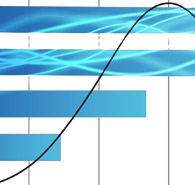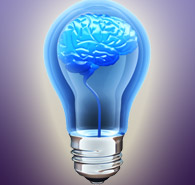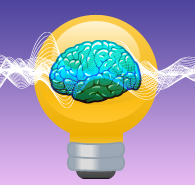Archive for the ‘Disregulation’ Category
Friday, April 8th, 2011
 Neurofeedback is a highly promising emerging therapy for the autism spectrum. At issue here is a tool for the direct training of brain function, one that has already shown itself highly effective in addressing a wide range of “mental health” concerns. As has been the case for other therapies, its application to the autism spectrum has been complicated by the inherent complexity of the condition we confront. In the following, we recapitulate the development of neurofeedback for the autism spectrum and give some guidance to both therapists and parents with regard to the choices open to them. Neurofeedback is a highly promising emerging therapy for the autism spectrum. At issue here is a tool for the direct training of brain function, one that has already shown itself highly effective in addressing a wide range of “mental health” concerns. As has been the case for other therapies, its application to the autism spectrum has been complicated by the inherent complexity of the condition we confront. In the following, we recapitulate the development of neurofeedback for the autism spectrum and give some guidance to both therapists and parents with regard to the choices open to them.
Our own work with the autism spectrum using neurofeedback goes back some twenty-five years. In those early days of the field, the principal application of neurofeedback was to Attention-Deficit Hyperactivity Disorder (ADHD), but the very same procedures were clearly also helpful for a variety of other issues. So it came naturally to want to try these methods also with children on the autism spectrum. These early attempts were just as likely to make things worse as they were to make things better, so we quickly placed a virtual fence around autism and decided we did not know enough to venture there. Some years later, a few practitioners in our network reported some good results with newer techniques, so the door was once again opened to working with the autism spectrum.
(more…)
Posted in Application of Neurofeedback, Biofeedback, Disregulation, Neurofeedback | 5 Comments »
Thursday, August 5th, 2010
 The Dysponesis Hypothesis The Dysponesis Hypothesis
We are always casting about for better ways to frame the work that we do in order to make it comprehensible to other professionals and lay persons. Sometime it helps to dip into past history to see how others wrestled with the same issue. One notion that has threaded its way through is that of simple inefficiency in brain regulatory function, which naturally leads to the suggestion that our training improves regulatory effectiveness through promoting higher efficiency in the regulatory mechanisms. It’s a simple concept with a certain amount of face validity, and also offers the virtue of vagueness where we are still uncertain about the details. Another slightly different theme is that the brain sometimes works against itself, that its efforts to right the ship are sometimes counter-productive.
The term dysponesis encompasses a variety of dysfunctions in which the CNS operates counter to the desired end-result. In considering the possible utility of this term in modern parlance, I am going back to an article written by George Whatmore and Daniel Kohli back in 1968 (Behavioral Science, 13(2), 102-124, (1968)), and reprinted as a book chapter in the text Mind/Body Integration (Erik Peper, Sonia Ancoli, and Michelle Quinn, editors), which was first published in 1979. The authors were two physicians in private practice.
(more…)
Posted in Application of Neurofeedback, Biofeedback, Clinical, Clinical Results, Clinical Symptoms, Disregulation, Neurofeedback, Research, Scientific | 4 Comments »
Monday, November 23rd, 2009
 Even before the usual fire season got underway in Southern California this year, we had one of the largest fires ever in the Angeles National Forest. It was arson-set, and suspicion is cast on an immigrant who developed mental health issues over the past few years. Just fighting the fire cost the state nearly $100M, and that does not count the resource loss, the loss of carbon capture in future years, the impending flooding damage, etc. Arson is notoriously difficult to prosecute. Fingering an arsonist often involves putting evidence together from a number of instances to detect a pattern. This means that the arsonist is taken out of action late in his career, after a lot of damage has already been done. Further, success in that effort means so little in societal terms. At best it takes one arsonist out of circulation, one from a population pool of 16 million people. Even before the usual fire season got underway in Southern California this year, we had one of the largest fires ever in the Angeles National Forest. It was arson-set, and suspicion is cast on an immigrant who developed mental health issues over the past few years. Just fighting the fire cost the state nearly $100M, and that does not count the resource loss, the loss of carbon capture in future years, the impending flooding damage, etc. Arson is notoriously difficult to prosecute. Fingering an arsonist often involves putting evidence together from a number of instances to detect a pattern. This means that the arsonist is taken out of action late in his career, after a lot of damage has already been done. Further, success in that effort means so little in societal terms. At best it takes one arsonist out of circulation, one from a population pool of 16 million people.
The same holds true for pedophiles. By the time they are apprehended, they have typically already offended against a large number of children. Serial killers are typically also caught only after many years of violence. Again, a pattern needs to be detected before a serial killer can even be hypothesized. Financial skullduggery is usually discovered only after many years, or it reveals itself when it collapses of its own internal contradictions. Of course we find some satisfaction in the prosecution of these criminals, but in the larger scheme of things the remedy is unavailing if justice arrives so late upon the scene. How might things be otherwise?
(more…)
Posted in Application of Neurofeedback, Commentary, Disregulation, Efficacy, Neurofeedback | 3 Comments »
Friday, October 2nd, 2009
 Last May, Science Magazine featured a review of a recent study of human health going back some 10,000 years. Surprisingly, perhaps, our state of health has been declining generally over the last 3,000 years, coinciding essentially with the broad adoption of agriculture. The trends are not subtle, apparently. Statures have shrunk, and there was an increase in skeletal lesions, tuberculosis, and leprosy. People started living closer together, and in more intimate contact with livestock—the formula for increases in contagion in general, and of animal-to-human viral transfer in particular. Last May, Science Magazine featured a review of a recent study of human health going back some 10,000 years. Surprisingly, perhaps, our state of health has been declining generally over the last 3,000 years, coinciding essentially with the broad adoption of agriculture. The trends are not subtle, apparently. Statures have shrunk, and there was an increase in skeletal lesions, tuberculosis, and leprosy. People started living closer together, and in more intimate contact with livestock—the formula for increases in contagion in general, and of animal-to-human viral transfer in particular.
The switch to grain-based diets had further consequences for dental health, with cavities and tooth loss becoming more of a problem. Vitamin deficiency diseases such as rickets and scurvy became more prevalent during the Dark Ages. This trend only began to be broken in the middle of nineteenth century, presumably due to increased trade, better sanitation, improvements in medicine, and better weather after the Little Ice Age. Since the 1950’s, however, the overall trend has once again been downward, and this is showing up even in trends in stature, which can be taken as a kind of integrative index to health status.
(more…)
Posted in Application of Neurofeedback, Disregulation, Efficacy, Health Care, Neurofeedback, Outreach, Veterans | 3 Comments »
|
|
Subscribe to Email Newsletter
The EEG Info Newsletter circulates via email at least once a month. A variety of topics related to the Neurofeedback / EEG Biofeedback field are covered in over 200 articles.
|
 Neurofeedback is a highly promising emerging therapy for the autism spectrum. At issue here is a tool for the direct training of brain function, one that has already shown itself highly effective in addressing a wide range of “mental health” concerns. As has been the case for other therapies, its application to the autism spectrum has been complicated by the inherent complexity of the condition we confront. In the following, we recapitulate the development of neurofeedback for the autism spectrum and give some guidance to both therapists and parents with regard to the choices open to them.
Neurofeedback is a highly promising emerging therapy for the autism spectrum. At issue here is a tool for the direct training of brain function, one that has already shown itself highly effective in addressing a wide range of “mental health” concerns. As has been the case for other therapies, its application to the autism spectrum has been complicated by the inherent complexity of the condition we confront. In the following, we recapitulate the development of neurofeedback for the autism spectrum and give some guidance to both therapists and parents with regard to the choices open to them.

 Last May, Science Magazine featured a review of a recent study of human health going back some 10,000 years. Surprisingly, perhaps, our state of health has been declining generally over the last 3,000 years, coinciding essentially with the broad adoption of agriculture. The trends are not subtle, apparently. Statures have shrunk, and there was an increase in skeletal lesions, tuberculosis, and leprosy. People started living closer together, and in more intimate contact with livestock—the formula for increases in contagion in general, and of animal-to-human viral transfer in particular.
Last May, Science Magazine featured a review of a recent study of human health going back some 10,000 years. Surprisingly, perhaps, our state of health has been declining generally over the last 3,000 years, coinciding essentially with the broad adoption of agriculture. The trends are not subtle, apparently. Statures have shrunk, and there was an increase in skeletal lesions, tuberculosis, and leprosy. People started living closer together, and in more intimate contact with livestock—the formula for increases in contagion in general, and of animal-to-human viral transfer in particular.
The Prevention Option
Monday, November 23rd, 2009The same holds true for pedophiles. By the time they are apprehended, they have typically already offended against a large number of children. Serial killers are typically also caught only after many years of violence. Again, a pattern needs to be detected before a serial killer can even be hypothesized. Financial skullduggery is usually discovered only after many years, or it reveals itself when it collapses of its own internal contradictions. Of course we find some satisfaction in the prosecution of these criminals, but in the larger scheme of things the remedy is unavailing if justice arrives so late upon the scene. How might things be otherwise?
(more…)
Posted in Application of Neurofeedback, Commentary, Disregulation, Efficacy, Neurofeedback | 3 Comments »